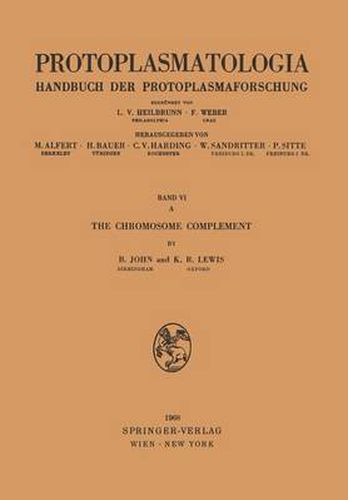Readings Newsletter
Become a Readings Member to make your shopping experience even easier.
Sign in or sign up for free!
You’re not far away from qualifying for FREE standard shipping within Australia
You’ve qualified for FREE standard shipping within Australia
The cart is loading…






This title is printed to order. This book may have been self-published. If so, we cannot guarantee the quality of the content. In the main most books will have gone through the editing process however some may not. We therefore suggest that you be aware of this before ordering this book. If in doubt check either the author or publisher’s details as we are unable to accept any returns unless they are faulty. Please contact us if you have any questions.
material can serve both autocatalytic and heterocatalytic functions. Thus not only is it unique in itB capacity for self-replication but its base sequence determines the specificity of proteins. And enzyme proteins are immediately responsible for the peripheral metabolism which enables the organism to impose its own kind of order on the raw materials it absorbs. The course of development is determined not only by the nature of the genetic material but by its over-all amount and the relative frequency of the different functional units. Differential rates of epigenetic activity matter also. In theory, therefore, differential development within or even between individuals could be determined by the differential replication of the various genetic elements or by their differential activity. And further variation could arise by the differential transmission of these elements between cells. Indeed it would appear that all these possibilities are exploited by living systems. If like is to beget like, however, any genetic change which occurs during development must be undone, or else germinal units preserved from change must be set aside. As far as is known, genetic changes, even those involving only quantity or relative amounts, are reversible to only a very limited extent so that a change once done cannot be undone. Consequently genetic changes during the development of presumptive germ-lines are either non existant or minor and confined to a small class of un aggregated deter minants.
$9.00 standard shipping within Australia
FREE standard shipping within Australia for orders over $100.00
Express & International shipping calculated at checkout
This title is printed to order. This book may have been self-published. If so, we cannot guarantee the quality of the content. In the main most books will have gone through the editing process however some may not. We therefore suggest that you be aware of this before ordering this book. If in doubt check either the author or publisher’s details as we are unable to accept any returns unless they are faulty. Please contact us if you have any questions.
material can serve both autocatalytic and heterocatalytic functions. Thus not only is it unique in itB capacity for self-replication but its base sequence determines the specificity of proteins. And enzyme proteins are immediately responsible for the peripheral metabolism which enables the organism to impose its own kind of order on the raw materials it absorbs. The course of development is determined not only by the nature of the genetic material but by its over-all amount and the relative frequency of the different functional units. Differential rates of epigenetic activity matter also. In theory, therefore, differential development within or even between individuals could be determined by the differential replication of the various genetic elements or by their differential activity. And further variation could arise by the differential transmission of these elements between cells. Indeed it would appear that all these possibilities are exploited by living systems. If like is to beget like, however, any genetic change which occurs during development must be undone, or else germinal units preserved from change must be set aside. As far as is known, genetic changes, even those involving only quantity or relative amounts, are reversible to only a very limited extent so that a change once done cannot be undone. Consequently genetic changes during the development of presumptive germ-lines are either non existant or minor and confined to a small class of un aggregated deter minants.